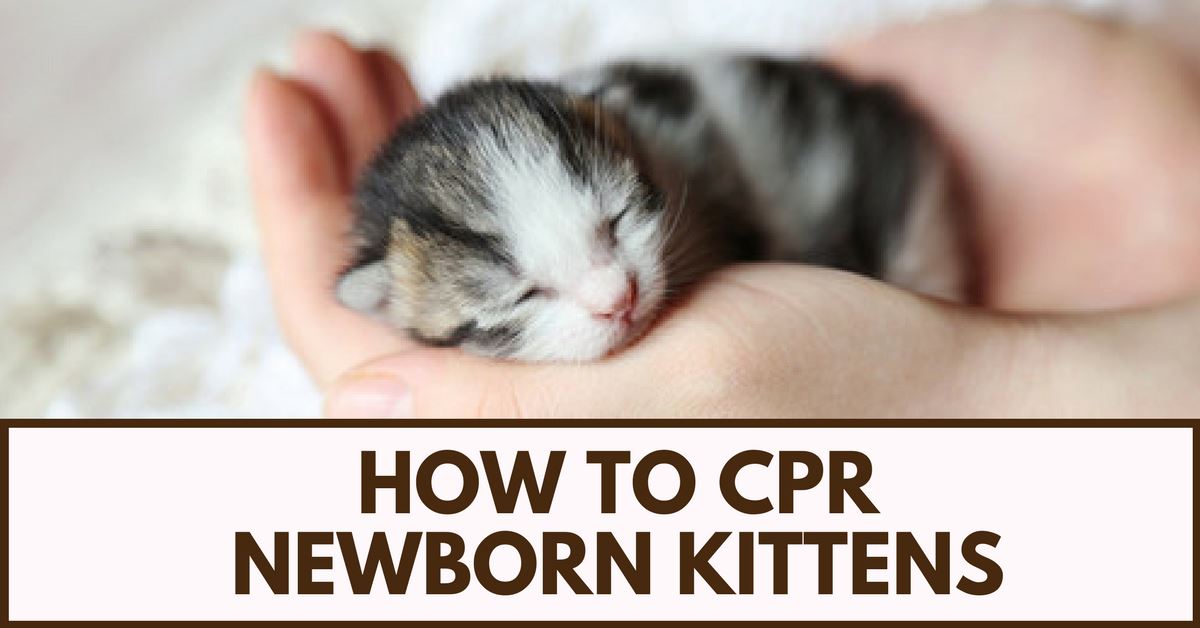How To CPR Newborn Kittens

How to Perform CPR On a Cat
It is important to know how to do CPR on newborn kittens if you are there when they are being born. Sometimes cats will not be breathing when they are born. This is a problem because they may not start breathing on their own. When a kitten is born, they may have fluid that is trapped in their nasal passage and throat passageways.
Follow the cardiopulmonary resuscitation (CPR) directions listed below:

How to Give a Cat CPR
The first thing you want to do is clear the airway. To do this you will hold the kitten’s head downward. This will allow gravity to assist you. When you do this, you are allowing the fluids to drain from the throat, lungs, and mouth. You can use a suction bulb to help with any excess fluids in the airway. You will need to put two or three puffs of air into the mouth and the nose of the kitten.
You may also try this method to help remove fluids from the mouth, lungs, and throat. You can cup the palms of your hands together. You will put the kitten in your hands on his or her back. The head should be out of the palms. You will swing the kitten like a pendulum, back and forth. The motion will help force any fluids that have become trapped, out. You should then wipe the face of the kitten and continue to the next step.
To do this, you will want to put your mouth on the kitten. However, before you do this, make sure that the tongue is in the front of the mouth. Make sure your mouth surrounds the nose and the mouth of the kitten. Do not provide large breaths because the lungs of a kitten are not large. If you provide to large of a breath, you could damage the lungs of the kitten.
Kitten CPR
After you have administered CPR, you will want to check for a heartbeat. You may use a stethoscope or you can simply feel the chest of the kitten. If you cannot find a heartbeat, you will want to compress the chest. You will compress the area that is at the back of their elbow. This is the approximate location of the heart. You will use your thumb, as well as your forefinger, to continue. You will press on the chest and compress quickly. A kitten will have a heartbeat of 150 beats per minute. This means your compresses should be quick. You should be administering about 100 to 120 compressions in a minute. While doing this, make sure you are administering another puff of air to the kitten. This should be done every fifteen or twenty seconds.
You should be checking for a heartbeat or breathing about every minute. If you notice the heart is beating slowly you will want to rouse the kitten. You can do this by roughly rubbing the kitten with a towel. However, you should still be careful while you are doing this. Newborn kittens are susceptible to injury very easily, especially if they are handled too rough. You do not want to hurt the kitten. After you have done this, you will hold the kitten by the scruff and turn it over.
Final Thoughts
If the heart stops beating at any time, you will want to keep administering CPR. You can do CPR on a newborn kitten for about five minutes. After five minutes of no heartbeat or breathing, it is unlikely the cat will be able to be revived. Keep in mind that this does happen quite often. About ¼ of kittens will die when they are born. If you have done CPR for several minutes to no avail, you tried your hardest and the cat has passed on.
We hope this helps you in assisting your kitty. Always have a comfy bed for them to lay in during this process. You can find some here.
Leave a comment
Comments will be approved before showing up.

